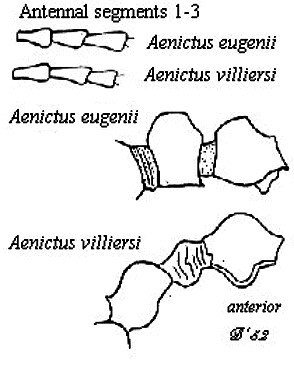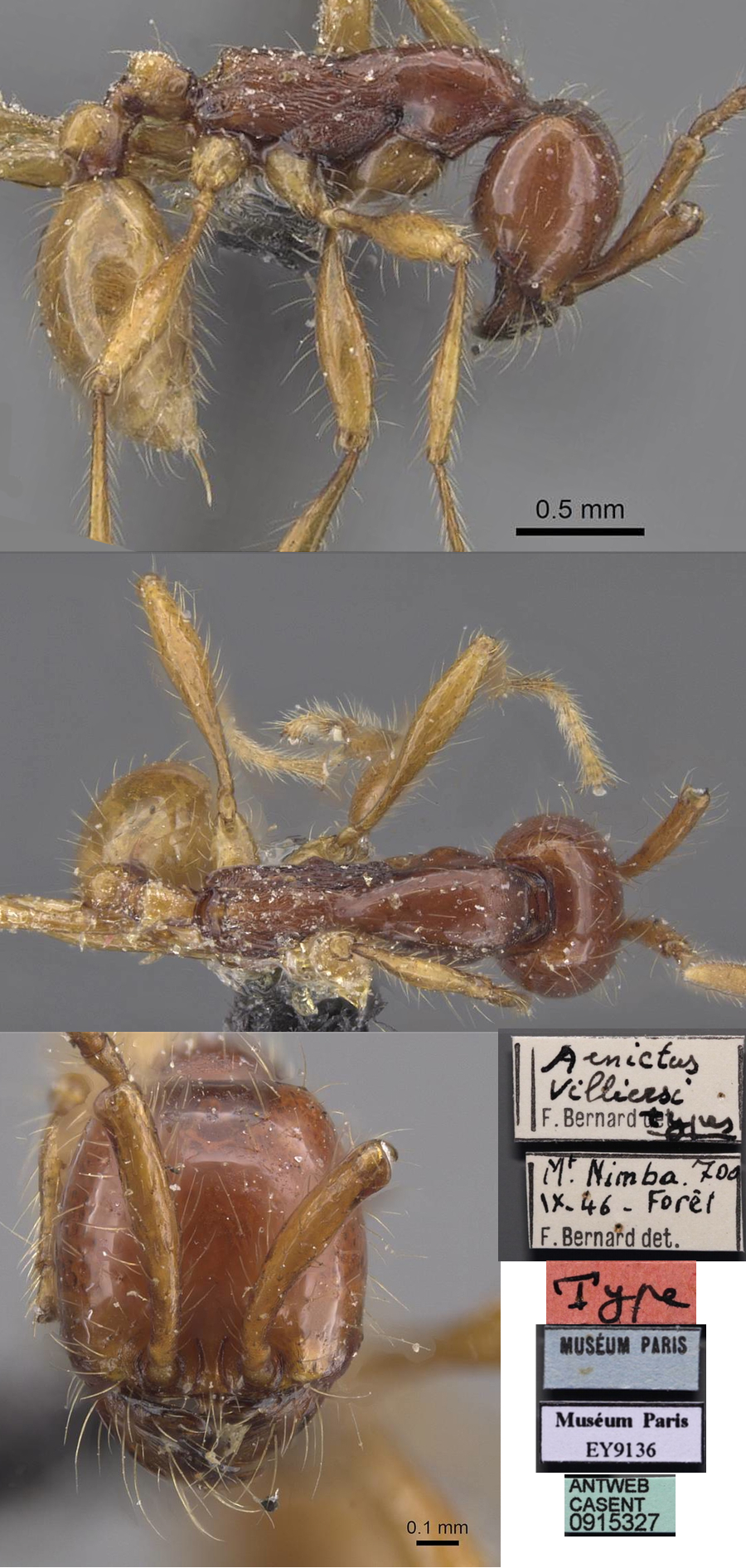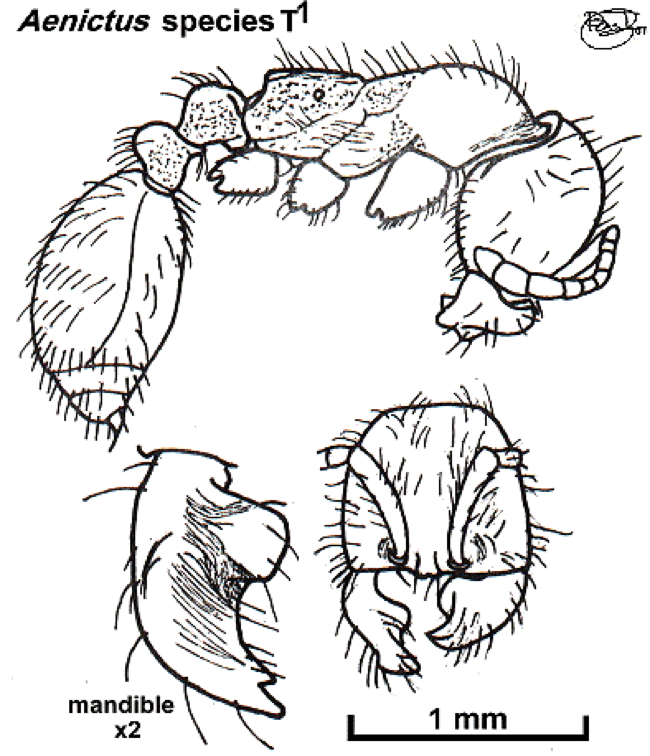Aenictus villiersi Bernard
  Type location Guinea
(Bernard, 1952: 221, illustrated, worker) Mt. Nimba, 4 workers, from
north-east forest litter, 700 m, collector Villiers; worker only
described (see Bolton, 1995) see below Type location Guinea
(Bernard, 1952: 221, illustrated, worker) Mt. Nimba, 4 workers, from
north-east forest litter, 700 m, collector Villiers; worker only
described (see Bolton, 1995) see below  . .
|
 TL 3.0-3.2 mm; colour of head and thorax red, petiole,
abodomen and appendages dark yellow. Very smooth and shiny, except
posterior two-thirds of thorax sides, matt and shagreened. Pilosity
yellow, not very dense but raised and very long, on all body and head.
Generally, slender and convex, simliar to the Aenictus group eugenii-congolensis-mariae,
but petiole and antennae distinct:- TL 3.0-3.2 mm; colour of head and thorax red, petiole,
abodomen and appendages dark yellow. Very smooth and shiny, except
posterior two-thirds of thorax sides, matt and shagreened. Pilosity
yellow, not very dense but raised and very long, on all body and head.
Generally, slender and convex, simliar to the Aenictus group eugenii-congolensis-mariae,
but petiole and antennae distinct:-
Antennae relatively slender, funiculus segment 2 almost double the
length of segment 1 and more than double that of 3. Thorax notably
convex, flanks of mesonotum and propodeum strongly striated
longitudinally.
With eugenii (known from South Africa) the petiole segments are
angular dorsally, shagreened or puncturated, both segments having a
ventral anterior tooth and a posterior pedicel which is cylindrical and
puncturated. In contrast, in villiersi the dorsal and ventral
aspects are rounded, without sharp ventral teeth; the pedicel is
striated but the remainder of the petiole is smooth. The petiole type
resembles that of mariae, a southern African species also (?)
known from Cameroun (?), where the head is smaller and the
funiculus shorter. It seemed that the group contains Aenictus mentu
Weber, from Mt. Imatong, Sudan, but its petiole shape is lower and more
slender (after Bernard, 1952).
|
 The
photomontage of the type worker is collated
from http://www.antweb.org/specimen.do?name=casent0915327 The
photomontage of the type worker is collated
from http://www.antweb.org/specimen.do?name=casent0915327
Note: From the Antweb scale this is bigger, TL ca 3.8 mm than Bernard's
stated TL 3.0-3.2 mm.
|
 Nigeria
specimens (as Aenictus species Tą, Taylor, 1980b: 7). WORKER.
TL 4.54 mm, HL 0.76, HW 0.86, SL 0.59, PW 0.54 Nigeria
specimens (as Aenictus species Tą, Taylor, 1980b: 7). WORKER.
TL 4.54 mm, HL 0.76, HW 0.86, SL 0.59, PW 0.54
Colour dark orange-brown, legs and gaster lighter, mandibles very dark,
overall shiny and polished. Sculpturation of fine, faint reticulation
on the anterior pronotum, mesonotum, propodeum and pedicel; overlaid
with and partially replaced by fine longitudinal rugae on parts of
propodeum and mesonotum. Erect hairs long, fine and abundant. Head
widest at the anterior margin, with a distinct occipital margin. The
mandibles are massive, with the basal tooth being a huge blunt lobe,
the preapical tooth is moderate and the apical tooth is large and
slightly blunt. The clypeus has a bidentate median process on the
anterior margin. The position of the promesonotal suture is faintly
visible on some specimens. Propodeal declivity marginate and concave in
profile. The petiole is a flattened dome, with the subpetiolar process
trapezoidal, and the subpostpetiolar process acutely triangular.
I collected it from bare ground in a domestic garden and from leaf
litter in cocoa at the Cocoa Research Institute of Nigeria, Idi Ayunre.
Previously thought by me to perhaps be Aenictus weissi but it is a close match to the type worker shown above, albeit may be larger?
|
|